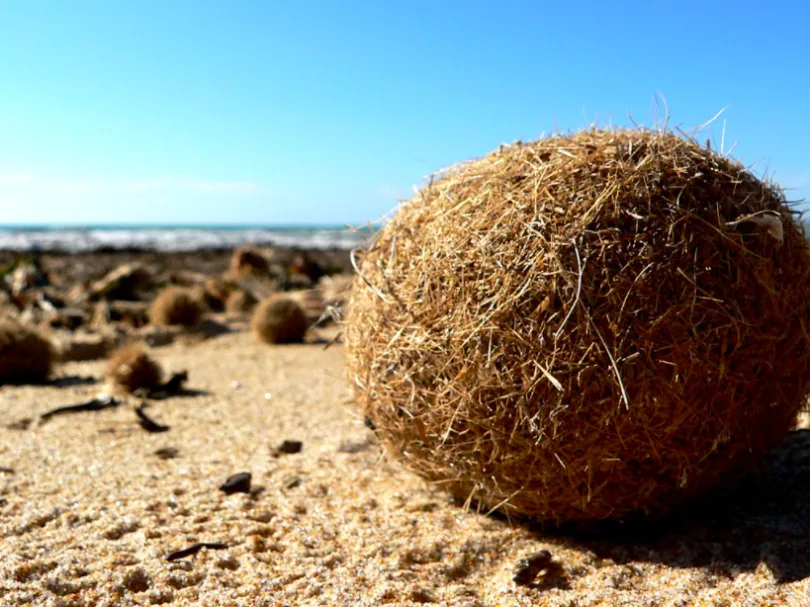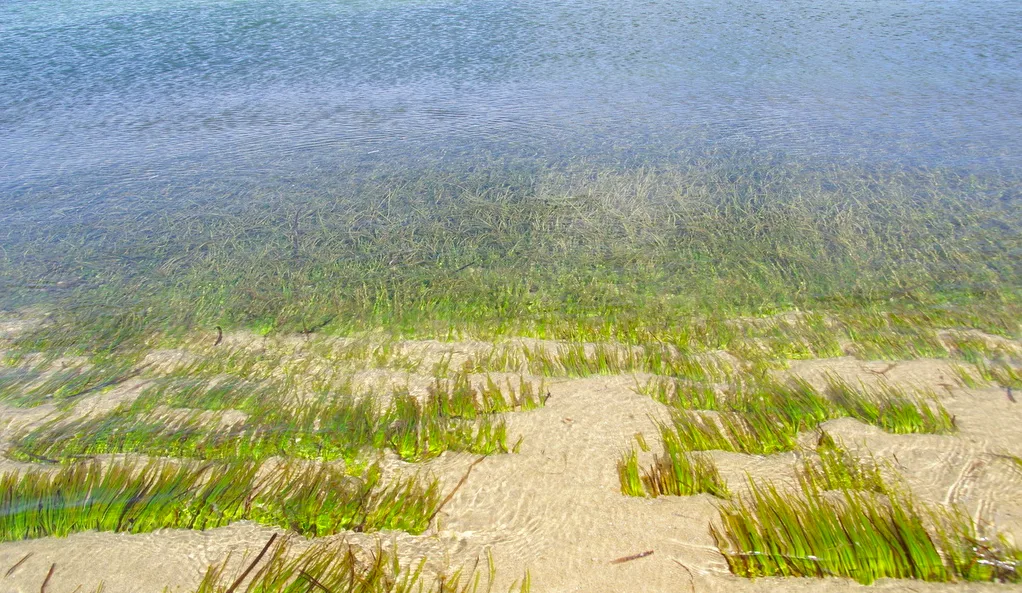
Seagrass 'Neptune balls’ trap millions of plastics from the ocean, study finds
Researchers say initial estimates indicate that Neptune balls capture over 800 million pieces of plastic each year
Scientists from the University of Barcelona noticed an interesting behaviour in seagrass (Posidonia oceanica) located in the Mediterranean—the gently swaying plants captured and bundled bits of plastic pollution into balls that eventually rolled onto shore. The researchers were stunned by the ability of marine plants to unintentionally filter and remove plastic pollution so they explored just how much plastic could be swept out from the sea.
Oceans are often the final destination for plastics and other pieces of garbage that are discarded on land. However, not all plastics remain dormant once they enter the oceans and scientists say that there is evidence that shows some plastics are washed back up to the shoreline. The University of Barcelona researchers’ study, published in Scientific Reports, states that very little is known about the processes that send plastics travelling back to shore and discovered that seagrass meadows play a leading role in this process.

P. oceanica in Naxos, Greece. Credit: Mark Burgess/Wikimedia Commons. (CC BY-SA 3.0)
Seagrass meadows are an abundant feature of many marine ecosystems and live in shallow coastal regions that are 0.5 to 40 metres below the ocean’s surface. The researchers chose Mallorca Island, located in the western Mediterranean Sea, as their study site because of the extensive P. oceanica meadows and because the highest accumulation of floating plastic debris in the Mediterranean Sea occurs along these shorelines.
This type of seagrass is a temperate species that washes up on beaches during the fall season, but the leaf sheaths near the underground roots become buried by sediments. During this process, fibres are released that eventually form “ball-shaped agglomerates known as seaballs” or “Neptune balls” that trap surrounding items, such as small pieces of plastic.
The researchers found that plastic debris occurred in half of all loose seagrass leaf samples they collected and 61.29 per cent of the plastic items were small fragments. Up to 1,470 plastic items per kilogram of dead seagrass remains were discovered and 17 per cent of all Neptune Balls contained some type of plastic item, most commonly filaments and fibres.

Credit: Oplats/Wikimedia Commons. (CC BY-SA 4.0)
The study says that more research on how Neptune Balls remove plastics from the ocean could improve oceanic management strategies and even though most scientific studies support the notion that “most plastic ends up in the seafloor,” there is increasing evidence that a considerable amount is washed ashore.
The role that seagrass plays in removing plastics is also not to be understated—Anna Sanchez-Vidal, lead author on this study, said that “we cannot completely know the magnitude of this plastic export to the land. However, first estimations reveal that [Neptune] balls could catch up to 867 million plastics per year,” in the University of Barcelona’s press release.
Though the causes are not specifically stated, the study says that “regrettably, it is estimated that between 13 and 50 per cent of potential initial P. oceanica area may have been lost since 1960.” In addition to removing plastics from the ocean, seagrass helps provide nutrients for other plants in marine ecosystems, protect beaches against erosion, and provide food for arthropod communities.
Given the important role that the seagrass plays in many different areas of the ecosystem, the researchers say “it is crucial to undertake specific actions to mitigate threats causing regression and ensure conservation.”
Thumbnail credit: Ezu/Wikimedia Commons. (CC BY-SA 2.0)












